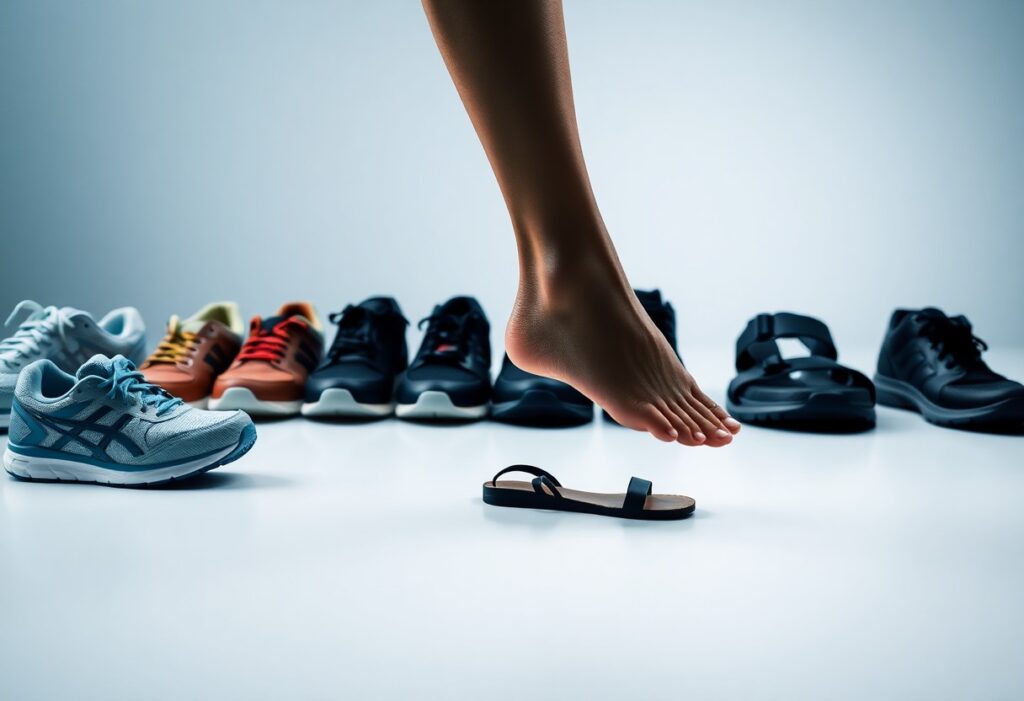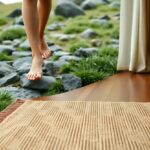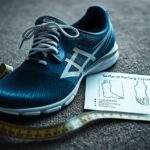
As you walk, the type of footwear you choose can either significantly enhance or detrimentally affect your foot health. Many individuals believe that shoes with increased cushioning and support are the ultimate solution to foot discomfort; however, traditional shoes often do more harm than good. Dr. Alissa Kuizinas, a podiatrist from Massachusetts, advocates for barefoot shoes or minimalistic shoes, suggesting they can lead to stronger and healthier feet. By selecting footwear that enables your feet to operate naturally, you can diminish the likelihood of developing foot issues and enhance your overall foot wellness, promoting a more active and pain-free lifestyle.
Recognizing the Limitations of Conventional Footwear on Foot Health
While conventional shoes may offer fleeting comfort for foot pain, they often worsen existing ailments and introduce new complications, as noted by Dr. Alissa Kuizinas. She emphasizes that the $133 billion shoe industry frequently prioritizes aesthetics and profitability over genuine foot health, resulting in designs that can constrain and weaken your feet over time. This reliance on traditional footwear can lead to a cycle of dependency that ultimately compromises your foot health, making it crucial to understand the long-term effects of your shoe choices.
Examining the Shoe Industry’s Misguided Approach to Foot Health
At the core of this dilemma lies the shoe industry’s misguided approach to addressing foot health, which often focuses on incorporating excessive cushioning, support, and rigid construction into footwear without tackling the underlying causes of discomfort. This strategy can foster a reliance on shoes that may actually deteriorate your foot health over time, leading to various complications that could have been avoided. It’s essential to reevaluate the types of footwear we invest in for our daily activities.
Analyzing the Common Flaws in Traditional Shoe Design
Traditional shoe designs frequently feature narrow toe boxes, inflexible soles, and excessive cushioning that can hinder natural foot movement, consequently resulting in weak and dysfunctional feet. Dr. Kuizinas asserts that footwear should shield your feet from external elements, rather than restrict their natural movement. A well-designed shoe should prioritize natural foot function and minimalist attributes, such as broad toe boxes, flexible and flat soles, and minimal cushioning to foster foot health. This approach not only enhances mobility but also promotes overall body alignment.
By embracing barefoot shoes or minimalistic footwear, you can actively strengthen your feet and enhance your overall foot well-being. Dr. Kuizinas advocates for a philosophy of using as little shoe as possible, enabling your feet to function naturally and move freely, which is crucial for maintaining healthy foot mechanics and preventing potential injuries.
The Indispensable Importance of Natural Foot Movement for Your Health
Footwear that restricts your foot’s ability to move freely can lead to a variety of foot issues and discomfort. It’s essential to evaluate how your choice of shoes impacts your overall foot health and comfort levels, as well as your performance in daily activities.
Understanding the Influence of Shoe Design on Foot Mobility
To fully grasp how shoes affect your foot’s ability to move, it’s crucial to examine the specific design and characteristics of your footwear. Traditional shoes often contain cushioning and support features that can actually impede your foot’s natural movement, leading to weak and dysfunctional feet over time. This limitation can prevent your feet from developing the strength and flexibility they require for optimal function and health.
Harnessing the Benefits of Allowing Natural Foot Mobility
The advantages of allowing your feet to move naturally are extensive, as strong feet are foundational to overall foot health. By opting for minimalistic shoes or barefoot footwear, you empower your feet to perform naturally, encouraging strength and resilience, which are essential for activities such as walking and running.
Movement is essential for developing strong feet. When restricted by conventional footwear, you risk developing various foot problems and discomfort. Conversely, embracing minimalistic shoes or barefoot options can significantly enhance your foot health by permitting natural movement and facilitating strength-building. By selecting the right footwear, you can lower your risk of developing foot issues and enhance your overall foot wellness, leading to a more active lifestyle.
Delving into the Principles of Functional Footwear for Optimal Health
Gaining a thorough understanding of functional footwear is crucial, as these shoes prioritize both foot health and natural movement. Functional shoes are specifically designed to allow your feet to operate as intended, negating the need for excessive support or confinement, thus promoting long-term health benefits.
Characterizing Functional Shoes and Their Essential Features
Upon conducting research and experimenting with various shoe styles, you’ll discover that functional footwear possesses unique characteristics, including a wide toe box, flat and flexible soles, along with minimal cushioning and support. These attributes empower your feet to move freely and naturally, fostering stronger and more capable foot mechanics, which can lead to improved athletic performance.
How Functional Shoes Enhance Overall Foot Health and Performance
Wearing functional shoes offers numerous advantages, such as improved foot strength, a diminished risk of injury, and enhanced overall foot health. These shoes facilitate your feet in functioning as they were intended, paving the way for stronger feet and better balance in your daily activities, including sports and exercise.
Conceptually, functional footwear is crafted to support your feet without imposing unnecessary restrictions, enabling them to move and flex naturally. This design philosophy promotes optimal foot health and minimizes the likelihood of developing foot ailments. By choosing functional shoes like barefoot shoes or minimalistic options, you actively encourage healthy foot function and mitigate the risk of foot pain and injury. Transitioning to functional footwear may require patience and gradual adjustment, but the long-term benefits for your foot health are invaluable and well worth the effort.
Recognizing the Key Features of Functional Footwear for Foot Wellness
To achieve optimal foot health, it’s essential to seek out shoes equipped with particular features. The key attributes to consider include:
- Wide toe box
- Flat and flexible soles
- Minimal cushioning and support
Being aware of these characteristics will significantly aid you in selecting shoes that foster healthy foot function and support, enabling you to engage in various activities more comfortably.
Grasping the Importance of Wide Toe Boxes and Flexible Soles
A critical feature of functional shoes is a wide toe box, which permits your toes to spread naturally. This design helps prevent toe jamming and other discomfort-related issues that could lead to chronic foot pain and misalignment of the toes, ultimately affecting overall posture.
Understanding the Necessity of Minimal Cushioning and Support
Along with a wide toe box, functional shoes should also feature minimal cushioning and support. This design element allows your feet to move naturally while strengthening foot muscles, thereby reducing the risk of foot issues. This approach encourages proper foot mechanics and can prevent injuries in the long run.
It’s essential to highlight that minimalistic footwear, including barefoot shoes, can greatly benefit your foot health by enabling your feet to function freely. By opting for shoes with minimal cushioning and support, you can enhance muscle strength in your feet and lower the chances of injuries. This strategic approach not only improves your overall foot health but also decreases the likelihood of experiencing chronic pain. Thus, you should prioritize shoes that allow your feet to move naturally without excessive cushioning or support, ensuring a healthier future for your feet.
Embarking on Your Journey to Functional Footwear for Enhanced Health
Having recognized the importance of functional footwear, it’s time to embark on your transition. Contrary to the common belief that more cushioning and support equals better comfort, you should choose minimalistic shoes or barefoot shoes that facilitate your feet’s natural functioning, promoting better alignment and movement.
Effective Strategies for Transitioning to Functional Footwear
Despite any reservations, begin incorporating functional shoes into your daily life with these practical tips:
- Start with brief walks and progressively extend the distance to allow your feet to adapt
- Select shoes featuring a wide toe box and flat soles to enhance comfort
- Opt for minimal cushioning and support to encourage natural movement
The essential aspect is to allow your feet time to adjust to the new shoes while strengthening the muscles in your feet.
Understanding the Importance of Patience and Gradual Adjustment
Transitioning to functional footwear necessitates patience and a gradual approach. Shoes that are overly minimalist can result in discomfort and pain if your feet are not accustomed to them. Starting slowly is key, allowing your feet to acclimate to the new footwear while building strength.
Footwear options like barefoot shoes or minimalistic shoes can be immensely beneficial for your foot health, but it’s vital to introduce them gradually. Overuse or improper sizing can lead to injuries or persistent discomfort. The ultimate goal is to strengthen your foot muscles while improving your overall foot health, so be patient and avoid rushing through the process. The rewards will be significant; expect to experience improved balance, less pain, and stronger feet as you progress.
Building Strong and Functional Feet Through Smart Footwear Choices
Even in a world where wearing shoes with excessive cushioning and support is the norm, you can cultivate strong and functional feet by selecting the right footwear that aligns with your body’s natural movements.
Understanding the Connection Between Foot Strength and Overall Well-Being
In conjunction with other health factors, foot strength plays a pivotal role in your overall well-being, influencing your balance, posture, and movement capabilities, which in turn affects your daily activities.
The Role of Functional Footwear in Strengthening Your Feet
Functionally designed shoes that feature a wide toe box, flat and flexible soles, and minimal cushioning are essential in developing strong feet, as they allow for natural movement and growth of foot muscles.
Indeed, wearing functional shoes or barefoot shoes can significantly aid in building stronger foot muscles and enhancing your overall foot health. By granting your feet the freedom to move and operate naturally, you can minimize the risk of foot problems and optimize your balance and stability. As you make the switch to minimalistic shoes, you should expect to see improvements in your walking technique and your overall sense of well-being, leading to a healthier lifestyle.
By taking charge of your foot health, you can select shoes that complement your feet’s natural functions rather than hinder them. Opting for barefoot shoes or minimalistic options that allow your feet to operate naturally will facilitate strength development over time. In doing so, you’ll enjoy increased stability and comfort during activities, granting your feet the opportunity to grow strong and capable. Start your journey by seeking shoes with a wide toe box, flat and flexible soles, and minimal cushioning and support, and exercise patience as you transition to a more natural walking style.
The Article A Podiatrist’s Guide to How Shoes Affect Your Foot Health appeared first on My Shoes Finder
The Article How Shoes Impact Your Foot Health: A Podiatrist’s Insights Was Found On https://limitsofstrategy.com






